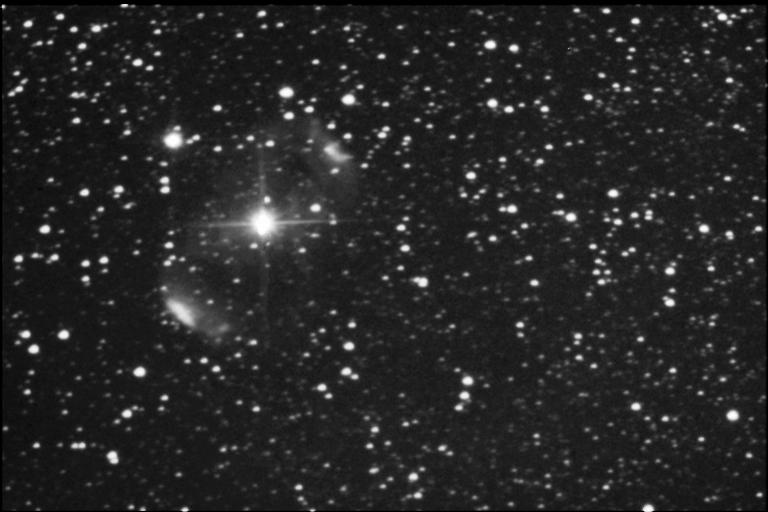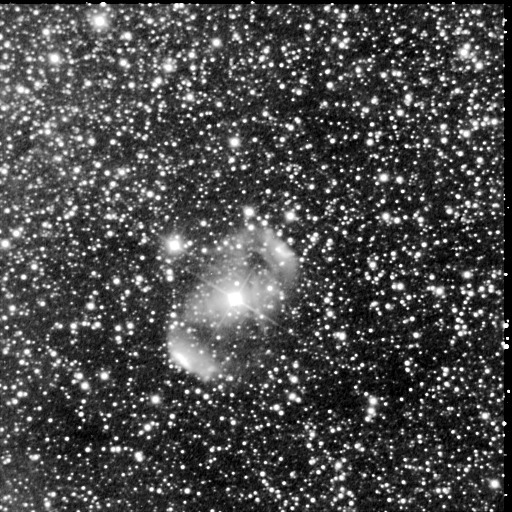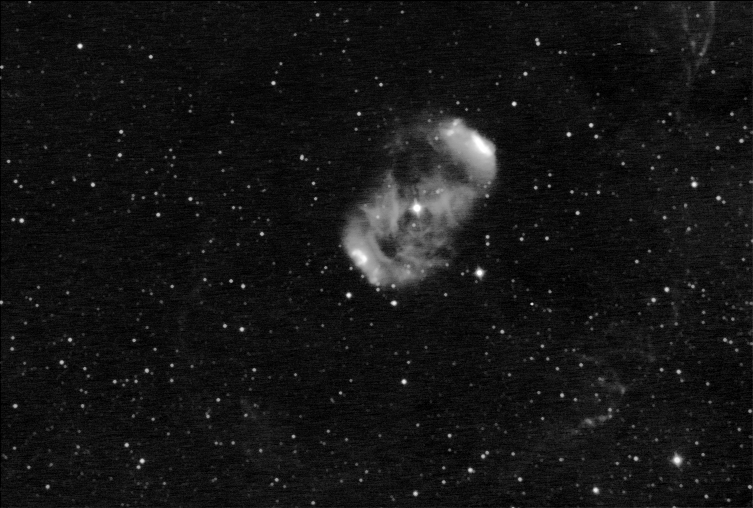
Combination of 2, 3 minute exposures, Meade 416XTE CCD.
8" f/6 newtonian prime focus.

NGC 6164/6165 is a sometimes listed as a planetary nebula although it probably should be listed as a mass-loss star. The bright star in the middle of the 2 arcs is an O6 star that has been ejecting material. Most of the material is too faint to see so all that is visible it the telescope are the two arcs, hence the two NGC designations. The arcs were easily visible in a 12" telescope and may be visible in an 8" under very dark skies.

The central star is slightly variable as is common with O-type stars, varying between magnitude 6.7 and 6.8. Since this star is so bright, it is necessary to keep the exposures very short. Anything over 10 seconds, will result in considerable blooming.
Another option is to use an H-alpha filter. This narrow-band filter cuts down on the light from the stars considerably, while still letting through most of the light emitted by the gas. The image below was made this way. Each individual exposure was 3 minutes duration, but the bright stars are still far from bloomed and most of the fainter ones are not recorded at all! Yet the nebula is well recored and also some very much fainter shreds located at the edges of the field.
